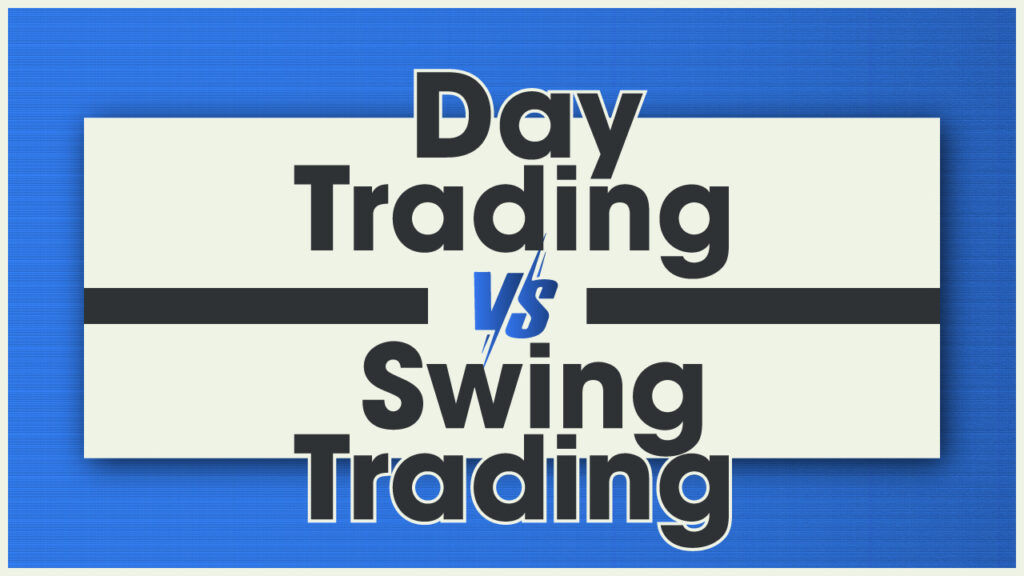
Day Trading vs Swing Trading – You’re trading stocks, there are these two really well-known methods that everyone talks about: Day trading and swing trading. Both can make you money, but they’re best suited for different types of traders, operate on different timetables, and pose distinct risks.
Suppose you’re on something like TradingView, which is amazing for charting and analysis. In that case, it’s super important to understand what day trading and swing trading are about—and choosing the one that’s right for you is the key to success.
Today, we will discuss the key differences between day trading and swing trading, determine which is best for various types of traders, and demonstrate how to use TradingView to take both trading methods to the next level, regardless of which you decide.
⚡ What is Day Trading?
Day trading is essentially selling and buying financial instruments within one day. A day trader attempts to catch very small price alterations and exits before the market closes to avoid overnight risks.
🧠 Attributes of Day Trading
- Short-Term Focus: Day traders typically hold positions for minutes to hours, never overnight.
- Frequent Trades: Day traders are all about executing loads of trades during the day and picking up small gains on each one.
- Leverage: Many day traders employ margin or leverage to increase potential gains (and risk).
- Requires Active Monitoring: Most day traders use live charts, alerts, and multiple monitors to track movements in real-time.
✅ Pros of Day Trading
• Instant Cash: Day trading can generate quick returns through multiple trades per day.
• No Overnight Risk: Positions are closed before market close.
• Highly Adaptive: Day traders can capitalize on short-term opportunities with speed.
⚠️ Downsides of Day Trading
• Time-Consuming: Not ideal for people who can’t dedicate hours to market monitoring.
• High Stress: Constant decision-making can be mentally draining.
• Transaction Costs: Frequent trades often mean higher fees.
🛠️ Day Trading on TradingView
• Real-time Price Charts: Use 1-minute, 5-minute, or 15-minute charts.
• Technical Indicators: Tools like MACD, RSI, and Bollinger Bands help spot entries/exits.
• Price Alerts: Set alerts for key price levels so you don’t miss opportunities.
• Live Data: Stay up-to-date with real-time market information.
📌 Related blog: Best Day Trading Indicators on TradingView
🌊 What is Swing Trading?
Swing trading attempts to capture price movements or trends over several days or weeks. It’s less hectic than day trading and combines technical and fundamental analysis.
Access our Live Forex Chart to analyze major currency pairs in real-time. Use interactive tools to track trends and make informed trading decisions.
📈 Characteristics of Swing Trading
• Medium-Term Vibe: Trades typically last from a few days to weeks.
• Low-Frequency Trading: Focused on quality trades over quantity.
• Mixed Analysis: Uses both chart patterns and economic events.
• Less Stress: Doesn’t require full-day screen time.
✅ Advantages of Swing Trading
• Less Time-Intensive: Ideal for people with jobs or other commitments.
• Higher Profits Per Trade: Benefit from larger price movements.
• Lower Transaction Costs: Fewer trades = fewer fees.
⚠️ Disadvantages of Swing Trading
• Overnight Risk: Positions are exposed to after-market events.
• Longer Waits for Profits: Not ideal for those who prefer instant gratification.
• Patience Required: Not suited for those seeking quick money.
🛠️ Swing Trading on TradingView
• Multi-Timeframe Analysis: Use 1-hour, 4-hour, or daily charts.
• Swing Indicators: Tools like Fibonacci retracement and moving averages.
• Pattern Recognition: Identify head and shoulders, triangles, etc.
• Custom Alerts: Set alerts for price targets and indicator signals.
📌 Related blog: Top Swing Trading Tools You Should Use
⚖️ So, Day Trading or Swing Trading—What’s Better on TradingView?
⏰ Time Commitment
• Day Trading: Requires full-time focus and fast reactions.
• Swing Trading: Requires occasional check-ins and less time overall.
📌 Related blog: How to Choose the Best Forex Trading Platform
📉 Risk Tolerance
• Day Trading: High risk, high reward—especially with leverage.
• Swing Trading: Moderately safer, but still exposed to overnight risks.
💰 Potential Earnings
• Day Trading: Frequent small profits; requires many successful trades.
• Swing Trading: Fewer but potentially larger profits per trade.
🧪 Which Strategy Works Best on TradingView?
• Day Trading is ideal if you have the time and enjoy active market engagement. TradingView’s real-time charts, indicators, and alerts help make fast decisions.
• Swing Trading suits people with busy lives or a preference for simplicity. TradingView’s powerful analysis tools help identify trends without frequent trading.
📌 Read more: Why TradingView Is a Must for Modern Traders
🏁 Conclusion
Day Trading vs Swing Trading
It really just comes down to how much time you’ve got, how much risk you’re comfortable with, and what you want to achieve. Both strategies work well on TradingView if you set up your tools properly.
Whether you’re chasing short-term wins or long-term swings, TradingView has the charting power, data, and flexibility to back up your moves. Choose what fits you—and trade smarter, not harder.
Explore our newest tools designed to enhance your Forex trading experience effortlessly Check HERE


